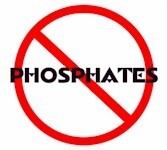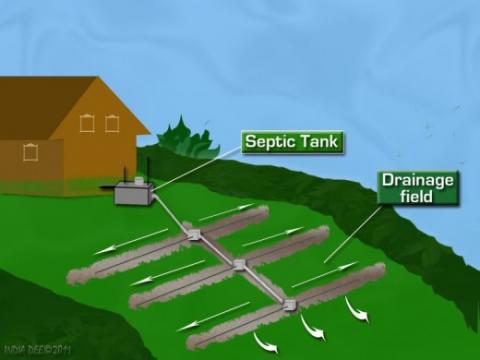Septic 101: A Mini-Course For Homeowners

It’s quiz time! How many of these questions on septic function can you answer correctly? True or False.
- Septic tank cleaning should be performed once every year.
- One fourth of the U.S. uses a septic system.
- The soil treatment area is designed to treat the solids that pass through the tank in the out going or effluent water.
- Bacteria is good and necessary for proper septic function.
- Septic tanks are designed to separate solids from liquids.
After you read this mini-course on septic function and care, you should know all the correct answers!
MINI-COURSE ON SEPTIC FUNCTION
One-fourth of U.S. homes use septic systems and more than 4 billion gallons of wastewater per day is dispersed below the ground’s surface. With that much wastewater being sent out every day, the potential for pollutants from neglected septic systems can be significant, affecting drinking water, swimming water, and water sources for animals and can result in both disease and infection.
A neglected septic system can also be very costly! Without proper maintenance, the drainage system will become clogged and the cost for repair or replacement…well…let’s not even think about that! Having your septic system inspected regularly, at least every 3 years, is the best way to keep your money from going down the drain….
What does a septic system do?
1. SEPARATES SOLIDS FROM LIQUID.
Thanks to the simple push of a lever, wastewater remains out of sight and mind. Most drains in the home converge to a single pipe that leads to the septic tank buried outside. When the wastewater enters the tank, it begins to separate. The heaviest particulate matter in the waste, called sludge, settles to the bottom of the tank. The top of the tank will have a scum layer made up of fats, oils, and proteins. The middle of the tank is made up of the effluent (or outgoing) water. All of these layers combined are called septage.
2. ALLOWS FRIENDLY BACTERIA TO DECOMPOSE ORGANIC SOLIDS.
Septic tank additives with beneficial bacteria enzymes will help to decompose solid matter as well as offset the use of anti-bacterial hand soaps, chemicals, and soaps containing phosphorus commonly used in most households. These chemicals actually destroy much of the healthy necessary bacteria which then slows the decomposition process. Bacterial additives will reduce the possibility of septic system failure, ensuring the home owner years of problem free service.

3. STORES SOLIDS UNTIL REMOVED BY PUMPING.
As the top scum and bottom sludge layers grow, it reduces the amount of retention time of the tank. The less retention time allows more solids to reach the soil treatment area. The soil treatment area is designed to treat the effluent water, not the solids. This is why pumping your septic tank is important. Without regular septic tank cleaning, the solids will travel beyond the tank which will plug the soil treatment area.
4. DELIVERS LIQUID TO SOIL TREATMENT AREA.
The septic tank is followed by a soil treatment area. In our area, the most common are leach trenches while older systems will have a filter bed. As water is used in the house, the effluent water in the septic tank is discharged out into the soil treatment area commonly called the drain field.

Performing septic system maintenance on your septic tank and drain field is crucial if you want to maintain optimum performance with your septic system. Have your septic tank pumped and inspected every two to four years.
NOW – take that quiz one more time! Did you change any of your answers? Correct answers are below.
If you find yourself at that 3 year mark since you last had your tank pumped, it’s time to call Tim Frank Septic Cleaning! They have been in business since 1966 and have won numerous awards, including the esteemed 2012 Angie’s List Super Service Award. You can’t go wrong with Tim Frank Septic!
Call 440-636-5111 or 800-319-2847 to schedule your appointment!
This link is a resource provided by the epa which is geared toward homeowners.
Here are the answers to the above questions:
- False
- True
- False
- True
- True
